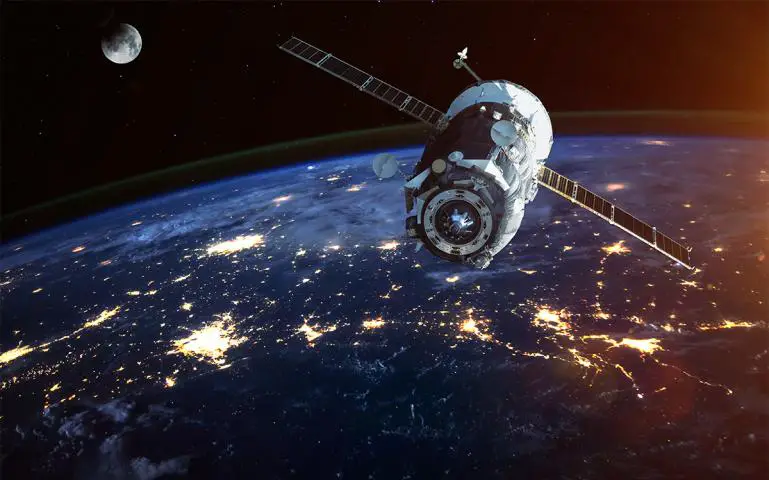For centuries, humanity has looked at the stars and longed for the day they would come within reach. As it turns out, that day came sooner than expected with the launch of the appropriately named Humanity Star.
The Humanity Star was designed and launched by the private American space flight company, Rocket Lab. Founded in 2006, this company’s mission is to “remove barriers to commercial space,” as stated on the Rocket Lab website.
Key to the fulfillment of this mission are the company’s Electron rockets. The Electron rockets are the company’s first rockets with the ability to reach orbit. Each rocket has a payload capacity of 150-225 kg, enough to carry several small satellites (such as CubeSats) per launch.
Previously, smaller satellites have had to tag along with larger satellite launches. Rocket Lab’s exclusive focus on launching these smaller satellites allows for better orbital positioning and more frequent launches, at a price comparable to the current launch system.
Rocket Lab launched its first Electron rocket, nicknamed “It’s a Test,” on May 25, 2017. The launch went smoothly, until ground control lost contact with the rocket four minutes into the flight. At this point, the launch was terminated. Subsequent investigation determined that the loss of contact was due to issues with the monitoring software being used to track the rocket, rather than any issues with the rocket itself.
With this glitch accounted for, Rocket Lab prepared to launch its second Electron rocket, nicknamed “Still Testing” on Jan. 21, 2018. The launch went without a hitch, reaching orbit and deploying its payload. The rocket carried three commercial satellites: an imagery satellite from the company Planet and two multi-sensor satellites from the company Spire.
The rocket also carried two secret projects from Rocket Labs itself. The first was a previously unannounced kick stage engine. This kick stage remained attached to the Spire satellites after they detached from the second stage of the rocket, and used a proprietary engine to navigate the satellites into their desired orbit. It also allows satellites to be placed in varying orbits from the same rocket launch, which is a significant technical step for launching small satellites.
The second secret project, the Humanity Star, isn’t as technically useful, though it is much more dramatic. The Humanity Star is essentially a great, heavenly disco ball, with 65 triangular panels forming a spherical polyhedron about a meter wide. Made of highly reflective carbon fiber, it reflects light from the sun, flashing its way across the sky as a bright streak of light.
According to the Humanity Star website, the satellite is intended to be seen from everywhere on Earth. “No matter where you are in the world, rich or in poverty, in conflict or at peace, everyone will be able to see the bright blinking Humanity Star orbiting Earth in the night sky,” says Rocket Lab founder and CEO, Peter Beck. “My hope is that everyone looking up at the Humanity Star will look past it to the expanse of the universe, feel a connection to our place in it and think a little differently about their lives, actions, and what is important.”
These lofty goals have been met with skepticism from some corners of the internet. While the Humanity Star may be visible from all corners of the world, it’s hard to see why it should inspire a greater source of unity than the moon or the stars, naturally occurring astronomical bodies that are already visible from anywhere on Earth.
Members of the scientific community, meanwhile, have expressed outrage at the satellite, seeing it as a publicity stunt at best and as space vandalism at worst. The growing industries of private spaceflight and microsatellites to which Rocket Labs caters are making space crowded. Putting a satellite into orbit with no practical value than to change the appearance of the night sky strikes many people as taking that trend one step too far.
In addition, astronomers see the Humanity Star as a potential impediment in their observation of natural stars. While astronomers already have to make allowances for satellites in their observations, the brightness of the Humanity Star, as well as its lack of practical utility, make it particularly trying.
A lot of the outrage, however, as well as a lot of Rocket Lab’s hopes for the Humanity Star, are probably overblown. According to an article from skyandtelescope.com, the satellite isn’t nearly as bright as the hype would suggest, being potentially less bright than the International Space Station. In addition, the satellite’s orbit means it is only visible from certain parts of the world at a time; most of the Northern Hemisphere won’t have a chance to see the Humanity Star until March.
Whether loved or hated, the Humanity Star won’t be around forever. It is predicted to deorbit in less than a year. Despite this brief life span, it has already made a significant impact on the astronomical community.
The Humanity Star is not the first aesthetic satellite, nor will it be the last. In July 2017, the crowd-funded Russian satellite Mayak was launched. It carried a deployable solar reflector intended to function in much the same way as the Humanity Star. The satellite successfully reached orbit, but failed to deploy its reflector.
Several projects are planned for the near future. The Orbital Reflector, a satellite designed in collaboration between artist Trevor Paglen and the Nevada Museum of Art, is anticipated to launch in the summer of 2018. Similar to Mayak, the Orbital Reflector will launch inside a CubeSat and expand in orbit into a reflective, diamond-shaped balloon.
These projects will likely not be the last use of space for aesthetic purposes; the Humanity Star’s name suggests why: There’s something uniquely compelling about adding lights to the night sky. The stars seemed forever beyond reach little over a century ago. Even now, humanity is just beginning to explore the sky.
Leaving a mark upon its beauty is perhaps the ultimate way for people to express their presence in the cosmos, the space equivalent of planting a flag at the south pole. In any case, I’ll definitely try and get a glimpse of the Humanity Star when it comes my way.

















